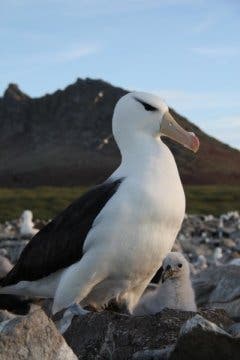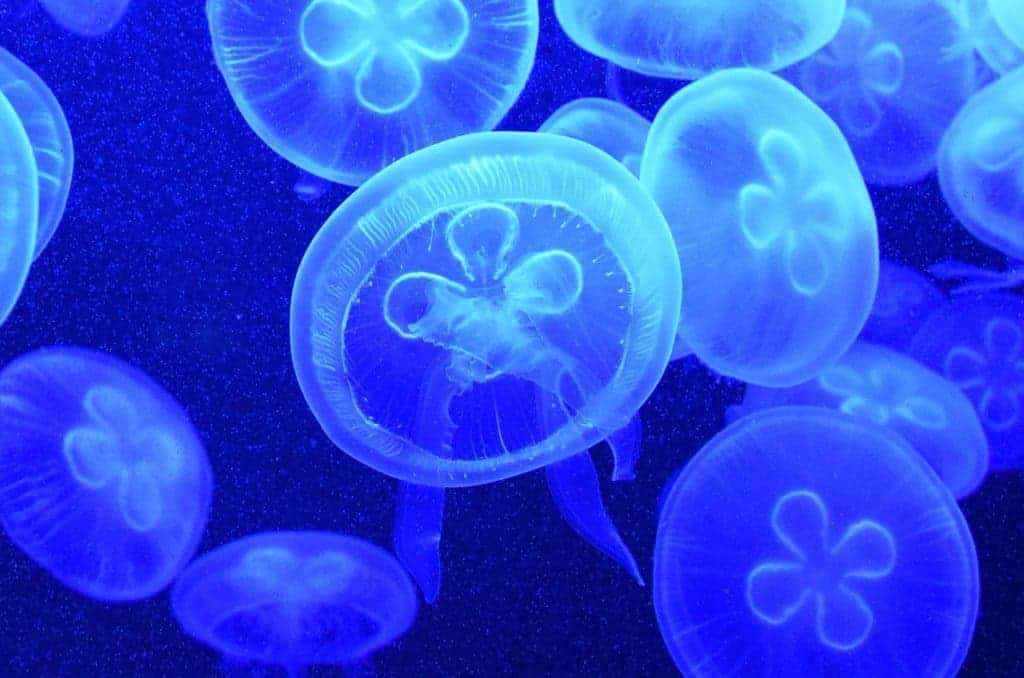Not many animals eat jellyfish; they are mostly made of water and have a very low nutritional content. With overfishing and warming water temperatures, jellyfish are increasing in number. Ocean sunfish and sea turtles are the main consumers of jellyfish. Now, from DNA scat evidence, jellyfish are also a staple food for albatrosses.
One of the world’s most abundant albatrosses, the black-browed albatross (Thalassarche melanophris), breeds around the Southern Ocean. Researchers from the University of Tasmania used DNA analysis on 1,460 scats from albatrosses. The scats were collected from eight breeding colonies covering around Antarctica over two consecutive breeding seasons.

“We need to understand what albatross eat so we can identify how marine ecosystems might be changing in response to pressures such as climate change or fishing,” said researcher Julie McInnes of the University of Tasmania’s Institute for Marine and Antarctic Studies.
The albatrosses are top predators and therefore are used as health indicators of the marine ecosystem. A few sightings of albatross eating jellyfish had been recorded in the past, but it was seen as something rather unusual. When the albatross diet was studied, stomach content analysis was primarily used. Jellyfish was found in less than one-fifth of samples and then only in extremely low volumes, such as about 5% of the total. These studies likely failed to detect jellyfish remains because the animal’s tissue is very soft and quickly digested. Stomach content analyses are better for prey with hard parts, like fish bones and squid beaks which can stay in the bird’s stomach for weeks.

In this study, DNA metabarcoding was used to identify the birds’ prey. Its accuracy is not hampered by the gelatinous nature of jellyfish. Fish was the main item that the birds ate, but the results show that jellyfish are actually common prey of black-browed albatrosses and the related Campbell albatross. Jellyfish DNA, mostly from scyphozoan jellies, was present in 42% of samples and up to 80% of samples at some sites. The albatrosses ate about the same proportion of jellyfish in low and high jellyfish years, which means that they particularly seek out jellies to eat.
“We were also surprised to find jellyfish in the diet of chicks, as we had expected adults would prefer fish to low energy value jellyfish when feeding their offspring,” said Ms. McInnes.
Understanding the behaviour of top predators and what they eat will help scientists to understand the effects of climate and environmental change on polar ecosystems. This study has just been going for a few years, it would be interesting to compare this to longterm data to see if the albatrosses are eating more jellyfish due to their higher proportion in the ocean. This finding suggests that albatrosses might be able to survive even through more drastic climate changes because they have a diverse diet.
Journal reference: Julie C. McInnes, Rachael Alderman, Mary-Anne Lea, Ben Raymond, Bruce E. Deagle, Richard A. Phillips, Andrew Stanworth, David R. Thompson, Paulo Catry, Henri Weimerskirch, Cristián G. Suazo, Michaël Gras, Simon N. Jarman. High occurrence of jellyfish predation by black-browed and Campbell albatross identified by DNA metabarcoding. Molecular Ecology, 2017; 26 (18): 4831 DOI: 10.1111/mec.14245


